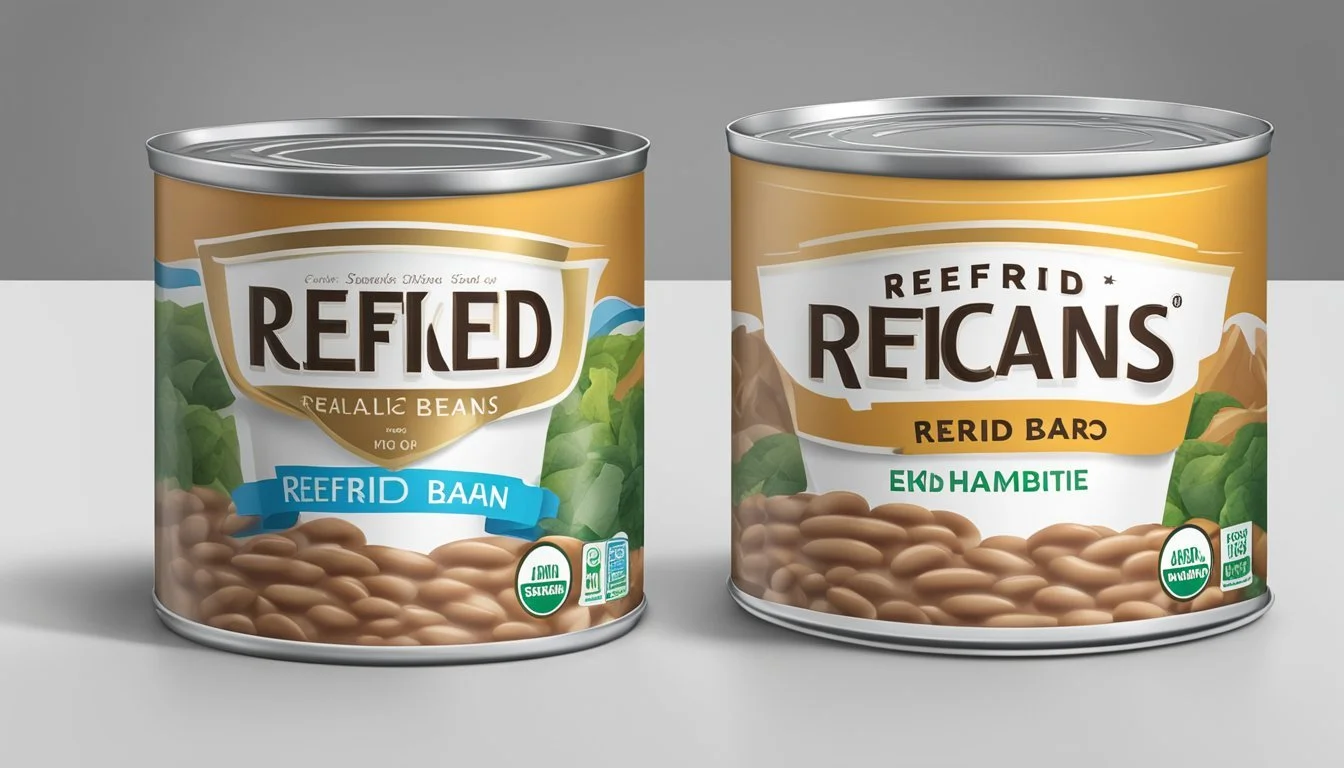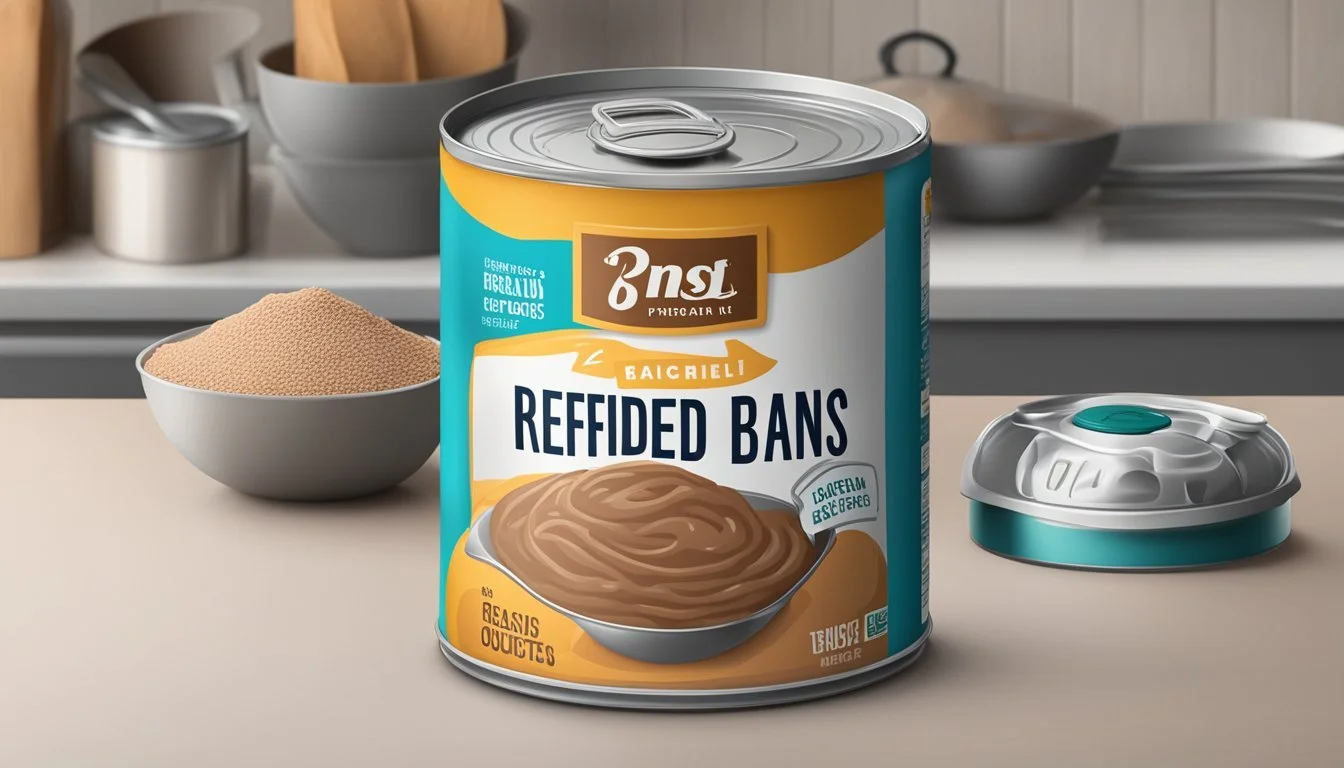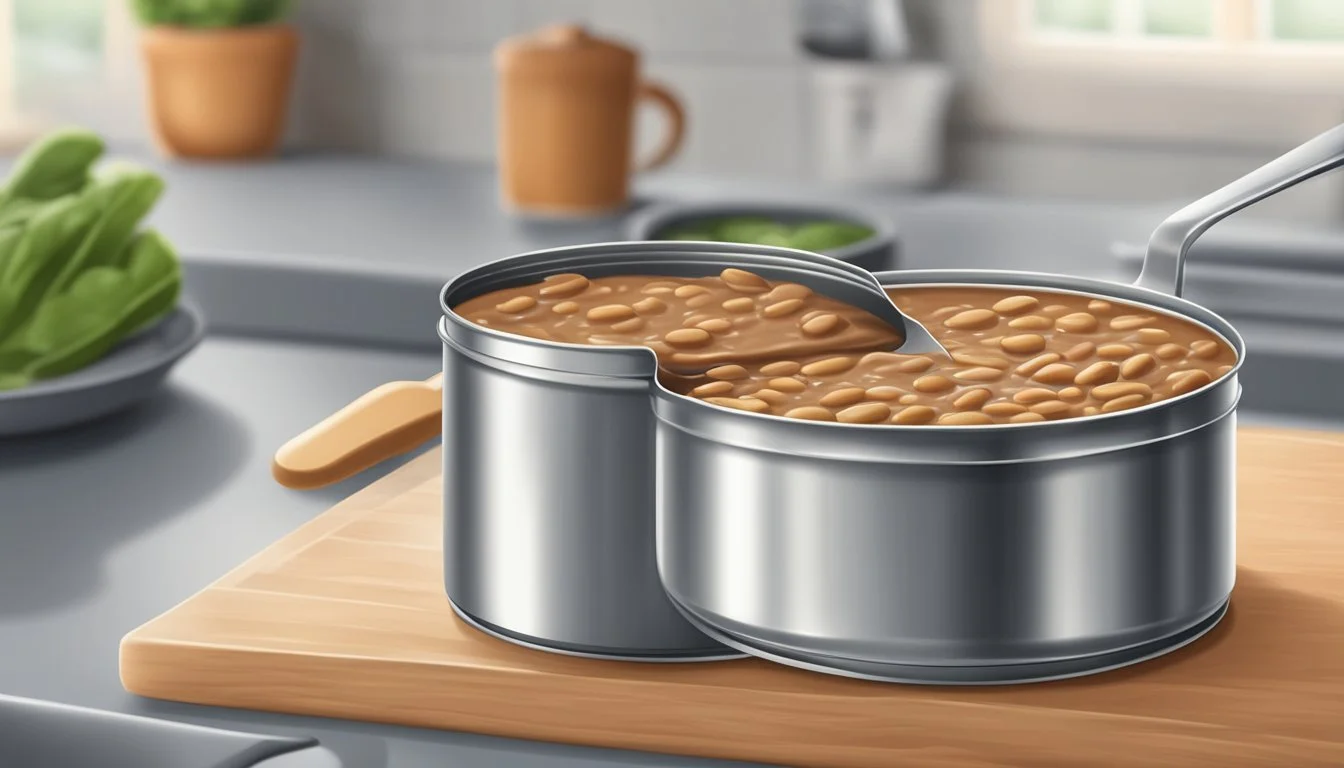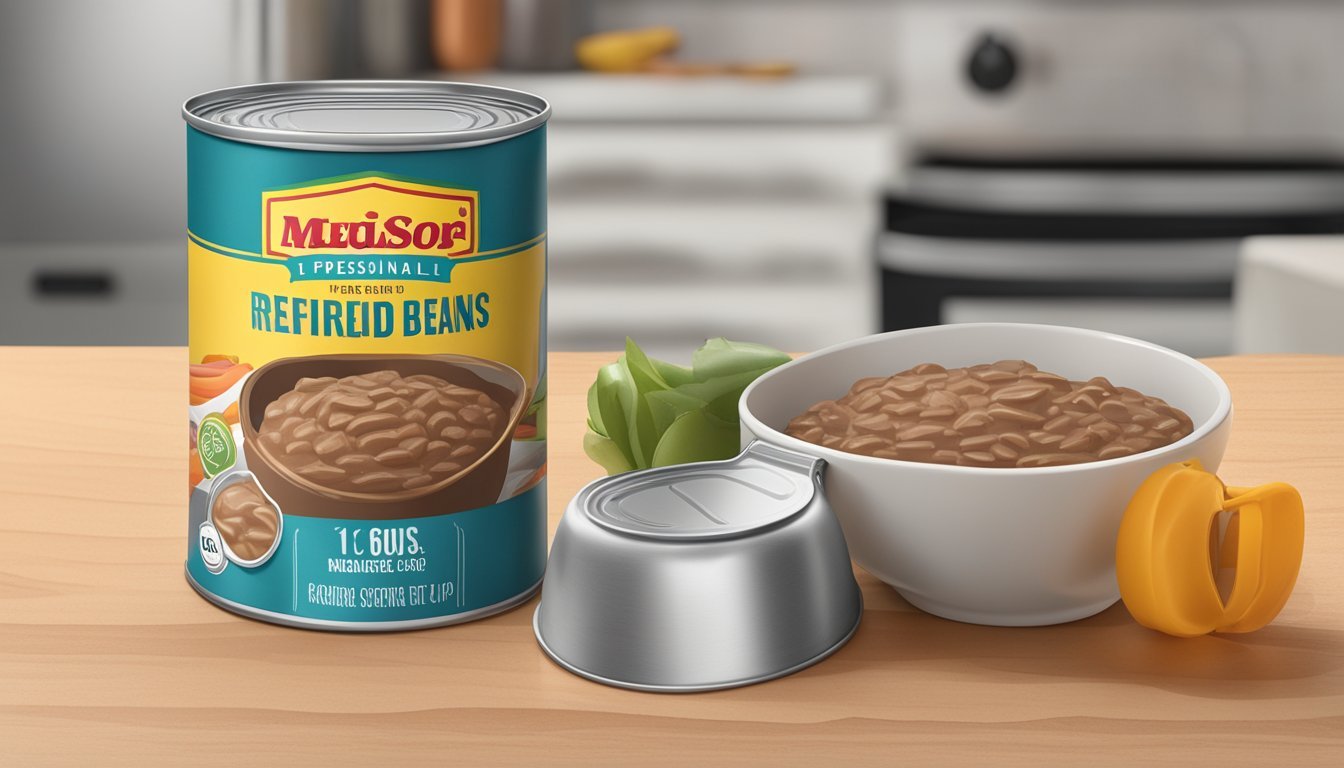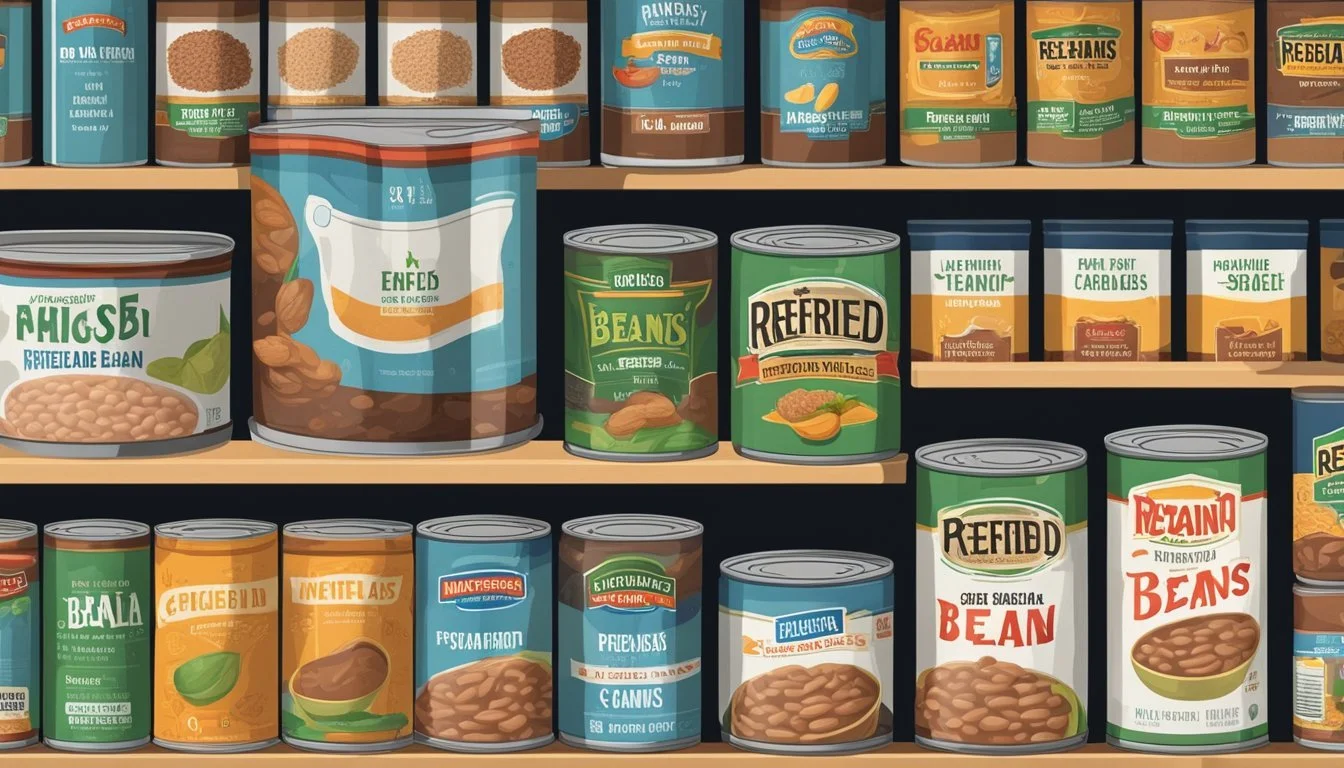How Many Ounces in a Can of Refried Beans?
Standard Sizes and Measurements
Determining the weight of canned goods is essential for meal planning, recipe accuracy, and nutritional intake, particularly when working with staple items like refried beans. A standard can of refried beans typically contains about 15 ounces, which offers a convenient measure for both home cooking and commercial food preparation. Given that the weight can be subject to slight variation depending on the manufacturer and any additional ingredients, consumers should always check the label for the most accurate information.
The weight of the beans alone, however, differs from the total can weight because it excludes the weight of the liquid in which the beans are stored. Once drained, the contents of a 15-ounce can of refried beans may yield slightly less than 15 ounces of actual beans due to the drainage of excess liquid. Understanding this distinction is crucial for those carefully monitoring their food portions, such as individuals adhering to specific dietary guidelines or preparing recipes that call for precise measurements.
Understanding Can Sizes and Contents
When selecting canned refried beans, consumers consider various aspects such as the size of the can, nutritional content, and ingredients used. Here’s what they need to know to make informed choices.
Standard Can Sizes
Canned refried beans typically come in standard sizes, which refer to the weight and volume of the contents. The most common sizes for canned refried beans are 15 ounces and 19 ounces. A 15-ounce can generally holds about 1.5 cups of beans, whereas a 19-ounce can contains approximately 2 cups.
Refried Beans Can Content
In terms of content, a can of refried beans is primarily made up of pinto beans or black beans, water, and seasonings. The weight listed on the can is the net weight, which includes both the beans and any liquid. Servings per can vary, but a 15-ounce can typically contains about 3.5 servings, with a serving size being half a cup.
Label Reading and Nutritional Information
Consumers should read the label for detailed information on calories, protein, fiber, sodium, saturated fat, cholesterol, and fat content. For example, a label might indicate that a half-cup serving of refried beans contains 100 calories, 6 grams of protein, 5 grams of fiber, 500 milligrams of sodium, 1 gram of saturated fat, and 0 milligrams of cholesterol.
Types of Canned Refried Beans
Canned refried beans are available in several types depending on the ingredients and brand. Some cans might specify that they contain no added fat or low sodium, catering to health-conscious consumers. Others might highlight the use of a specific type of beans, such as organic black beans or traditional pinto beans, appealing to particular dietary preferences or flavor profiles.
Nutritional Benefits and Considerations
When analyzing the nutritional value of refried beans in a can, it is essential to examine the product's caloric content, macro-nutrient balance, sodium and fat levels, dietary fiber, and potassium. These factors play a significant role in evaluating how refried beans fit into a balanced diet.
Caloric and Macro-Nutrient Profiles
Refried beans offer a good balance of calories and nutrients. A serving size of 1 cup, or approximately 16 ounces of canned refried beans, typically provides about 237 calories. This serving includes a substantial amount of plant-based protein and essential carbohydrates. Specifically, refried beans supply a notable amount of protein, averaging around 15% of the Daily Value (DV), essential for muscle repair and growth.
Sodium and Fat Content
The sodium and fat contents are crucial considerations for maintaining a healthy diet. Canned refried beans can be high in sodium, with a standard serving size containing a considerable amount. Health-conscious consumers should check the label for low-sodium versions to manage intake. Regarding fat, canned refried beans contain about 5 grams per cup, with a certain amount of this being saturated fat. Opting for refried beans with no added animal fats can help reduce total fat consumption.
Dietary Fiber and Its Importance
A primary benefit of refried beans is their high dietary fiber content, which is necessary for digestive health. A 1-cup serving provides roughly 30% of the DV for fiber. Fiber is a crucial nutrient known to support heart health, help maintain normal blood sugar levels, and contribute to satiety, aiding in weight management.
Potassium Levels in Refried Beans
Potassium is an essential nutrient that aids in various bodily functions, including electrolyte regulation and blood pressure control. Refried beans contain this important mineral, with a serving providing a notable contribution to the required daily intake of potassium. Regular consumption can help to ensure optimal levels of this nutrient, supporting overall health.
Preparing and Cooking with Canned Refried Beans
Canned refried beans are a versatile ingredient that can be easily enhanced and incorporated into a variety of dishes. Understanding how to prepare and cook with these beans will elevate their flavor and texture to better suit your recipes.
How to Enhance Flavor
To boost the flavor of canned refried beans, consider sautéing onions and garlic until translucent before mixing them into the beans. Spices such as cumin, chili powder, or fresh cilantro can be stirred in. A dash of lime juice or adding fats like bacon drippings or olive oil also enriches the taste.
Draining and Rinsing Techniques
Although draining and rinsing canned refried beans is not typically necessary, doing so can reduce the sodium content and slightly adjust the texture. If one opts to drain, a small amount of water or stock can be added to maintain moisture during heating.
Incorporating into Recipes
Refried beans are an excellent addition to tacos, burritos, and as a side dish. They can also be used as a base for dips or to thicken soups. When adding to recipes, ensure they are well-heated and adjusted for seasoning to seamlessly blend with other components.
Diverse Ways to Serve
Canned refried beans are not just limited to traditional Mexican dishes; they make a great spread on sandwiches or a dynamic topper for salads. For a unique twist, serve them as a bean dip with a sprinkle of cheese and a side of tortilla chips.
Substitutes for Home Cooking
For those seeking to replicate homemade refried beans, dried beans cooked and mashed can be a substitute. This approach allows for greater control over flavor and nutrients. However, for ease and convenience, canned refried beans, with a few simple adjustments, can closely mimic the taste and texture of homemade beans.
Diet and Health Considerations
When selecting a can of refried beans, it's important for consumers to consider dietary needs such as sodium intake, fat content, and whether the product meets vegan or allergy-related restrictions.
Low-Sodium and Low-Fat Alternatives
Refried beans can vary widely in their sodium and fat contents. Traditional recipes may include high levels of both, which can be unsuitable for those monitoring their heart health or watching their calorie intake. Low-sodium and low-fat versions are available, offering a healthier alternative without compromising on the flavor. These products often substitute animal fats with vegetable oils, which can reduce overall fat content and align better with heart-healthy guidelines.
Nutritional Differences:
Regular Refried Beans: High in sodium and possibly made with lard or other animal fats.
Low-Sodium Refried Beans: Significantly reduced sodium content.
Low-Fat Refried Beans: Reduced fat content, often with healthier fat sources.
Plant-Based and Vegan Options
Refried beans are naturally plant-based and can be made entirely from beans and spices. However, some brands may add animal products for flavor. Vegans and those seeking purely plant-based protein sources should look for labels that specify vegan to ensure no animal products have been used. Vegan refried beans are not only nutritious but also excellent sources of fiber and protein, contributing to a balanced diet.
Key Components of Vegan Refried Beans:
Plant-based protein: Essential for muscle repair and growth.
High fiber: Supports digestive health.
No animal products: Suitable for vegans and plant-based diets.
Allergy and Dietary Restrictions
While beans are generally considered a healthy and nutritious choice, consumers with allergies or specific dietary restrictions need to read labels carefully. Refried beans may contain added ingredients that can trigger allergies. Moreover, they can be produced in facilities that process common allergens such as gluten, nuts, or soy. Individuals should look for allergen-free certifications or brands that guarantee a safe production environment.
Considerations for Allergies:
Check for added allergens in ingredients lists.
Look for allergen-free certifications or statements.
Storage and Preservation
Proper storage methods ensure the quality and safety of refried beans, whether they're commercially canned or homemade. It's essential to use the right conditions to preserve their taste and prevent spoilage.
Refrigeration and Freezing Tips
Refrigeration: After opening, one should transfer any leftover refried beans into an airtight container to maintain freshness. In the refrigerator, the beans will stay good for up to 5 days. To extend this period, refrigeration should be at consistent temperatures of 40°F (4°C) or below.
Airtight Containers: Always use airtight containers to prevent the beans from absorbing odors or drying out due to refrigerator's dry environment.
Portioning: For convenience, store the beans in meal-sized portions to facilitate easy defrosting and use.
Freezing: Freezing is an excellent option for preserving refried beans for up to 8 months. The beans should be cooled completely before transferring to a freezer-safe airtight container or bag.
Thawing Recommendations: To use frozen beans, thaw them overnight in the refrigerator or defrost in the microwave if time is short.
Texture Note: Freezing can slightly alter the texture of refried beans, but this can be remedied by reheating them with a bit of water or oil while stirring.
Shelf Life and Expiration
Commercially Canned Refried Beans:
Storage Location Shelf Life Pantry 2-5 years Refrigerator Up to 5 days Freezer Up to 8 months
Unopened Can: In a cool, dry pantry, unopened cans of refried beans typically have a shelf life of two to five years. Always check the expiration date printed on the can.
Handling: To preserve quality, avoid exposing cans to high temperatures or moisture which can lead to spoilage or can damage.
Homemade Refried Beans:
Storage Location Shelf Life Refrigerator Up to 5 days Freezer Up to 8 months
Preparation for Storage: If someone has homemade refried beans, they should place them in the refrigerator or freezer within two hours of cooking to prevent bacteria growth.
Observation: Persons should consistently check on the look, smell, and taste of the beans before consumption to ensure they have not spoiled.
Creative Uses and Serving Ideas
A can of refried beans is not only versatile but also adds hearty texture and rich flavor to various dishes. Here's how cooks can reinvent their next meal by incorporating this staple ingredient.
Accompaniment for Mexican Dishes
Refried beans traditionally serve as a side dish for classic Mexican meals. They complement the complex flavors of tacos, burritos, and fajitas exceptionally well. For an enhanced taste and texture, one might mix in diced jalapeño, chopped bell pepper, or aromatic spices to the beans before serving.
As a Base for Dips and Spreads
Refried beans are an excellent foundation for making hearty dips and spreads. A basic dip can be achieved by blending refried beans with salsa, sour cream, or melted cheese. Seasoning with chili powder adds a robust dimension, suitable for pairing with tortilla chips or fresh vegetables.
Innovative Recipe Adjustments
Incorporating refried beans into recipes invites innovation and adds a flavorful twist. They can fortify the richness of a chili, or when mixed with eggs and breadcrumbs, form patties for a satisfying veggie burger. For a creative appetizer, refried beans could be used in burrito roll-ups or as a stuffed bell pepper filling.
Homemade Vs. Store-Bought
When comparing homemade and store-bought refried beans, one should consider the differences in preparation methods, flavor, and convenience. Both approaches offer distinct advantages, which can influence a consumer's choice depending on their priorities such as taste preference, available time, and desired texture.
Preparing Homemade Refried Beans
Making refried beans at home typically involves dried beans, which must be soaked overnight or for several hours to soften. After the soaking process, the beans are cooked until tender, which can take a couple of hours. For mashing, one may use a potato masher or an immersion blender to achieve the desired texture. The key to flavorful homemade refried beans lies in the seasoning; incorporating ingredients like onion, garlic, and fats – such as bacon grease or oil – can greatly enhance the flavor. The entire process offers a hands-on experience allowing for customization of flavor and texture.
Steps for Homemade Refried Beans:
Soak the dried beans.
Cook until tender (approximately 2 hours).
Mash the beans with a potato masher or immersion blender.
Season to taste.
Comparison of Convenience and Taste
In terms of convenience, store-bought refried beans are unrivaled. They come in cans typically ranging from 15 to 16 ounces and require minimal time to heat and serve. The brand and flavor may vary, with some brands adding ingredients for a more savory profile, while others keep it simple for versatility in different dishes.
From a flavor and texture standpoint, homemade refried beans often have the advantage. The home cook has complete control over the consistency, whether they prefer their beans completely smooth or with a chunkier texture. In terms of flavor, homemade refried beans can be adjusted for personal taste, allowing for a richer and more complex profile compared to the standardized taste of a store-bought can.
Convenience: Store-bought is ready to eat; homemade requires time.
Flavor: Homemade can be customized; store-bought is fixed.
Texture: Homemade offers flexibility; store-bought is consistent.
The choice between homemade and store-bought refried beans ultimately depends on the individual's preference for convenience versus customization of flavor and texture. Homemade refried beans offer a personalized cooking experience, while store-bought beans provide a quick and consistent solution.
Additional Tips and Considerations
When working with canned refried beans, fine-tuning the cooking time, texture, and flavor is crucial. This section provides targeted advice to ensure the beans are prepared to perfection.
Cooking Time and Techniques
The cooking time can vary depending on whether one is using a skillet, instant pot, or other methods. In a skillet, beans typically heat through in about 5-10 minutes over medium heat. As for the instant pot, the beans can be heated on the "Sauté" setting for a similar duration, ensuring they are warmed evenly throughout without scorching.
Adjusting for Texture and Consistency
To achieve the desired texture, one might need to adjust the liquidity of the beans. Adding a small amount of water or broth can soften the beans if they're too thick. For a creamier consistency, add a bit of milk or a pat of butter. Mashing the beans further can help reach the smoothness one prefers. If the beans are too runny, letting them simmer for a few extra minutes can help reduce excess moisture.
Enhancing with Additional Ingredients
Enhancing the flavor of canned refried beans is easily achieved with a few additions:
Seasoning: Incorporate salt, pepper, and cumin to taste.
Freshness: A squeeze of lime juice and a handful of chopped cilantro can add brightness to the dish.
Heat: For a spicy kick, consider adding diced jalapeño pepper.
Freezing: If there are leftovers, refried beans freeze well in air-tight containers—simply thaw and reheat when ready to use.
By following these suggestions, one can elevate the humble can of refried beans to a side dish worthy of any meal.
Conclusion
A can of refried beans is a staple in many pantries due to its convenience and nutritious profile. Its versatility allows it to be incorporated into a variety of recipes. When considering portion sizes, it is essential to know the quantity one is working with.
Can Size Ounces Small 15-16 oz Medium 22-28 oz Large 29-30 oz
Consumers should always check the label for the exact weight to manage their recipes accurately. While a small can is suitable for individual meals or small families, a large 29-30 ounce can serves a larger group, making it a fit for gatherings or meal prepping.
In terms of health benefits, refried beans can be a healthy addition to one's diet as they are rich in fiber and protein. The traditional preparation method may involve added fats, but numerous recipes offer lighter versions for those conscious about their intake.
For time-savers or those looking for nutritious and convenient meal components, canned refried beans are an excellent choice. They require minimal prep time and can easily be enhanced with spices or additional ingredients to elevate the flavor, catering to both novice cooks and seasoned chefs alike.


